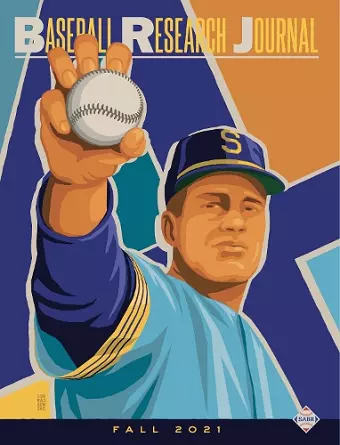Baseball Research Journal (BRJ), Volume 50 #2
Society for American Baseball Research author
Format:Paperback
Publisher:Society for American Baseball Research
Published:1st Nov '21
Currently unavailable, and unfortunately no date known when it will be back

In this issue, we remember the enormous contribution of Jim Bouton, pictured on the cover in a portrait by artist Gary Cieradkowski. Throughout baseball’s hidebound history, rebels and mavericks have emerged to challenge the status quo in the sport and the wider society, none more so than Bouton. His book Ball Four ultimately changed baseball, the sports media, and American literature. During his playing days, Bouton spoke out against the Vietnam War, South African apartheid, the exploitation of players by greedy owners, and the casual racism of the teams and his fellow players. When his baseball career ended, he continued to use his celebrity as a platform against social injustice. Fifty years after Ball Four’s publication and now two years after Bouton’s death, Robert Elias and Peter Dreier look back at the legacy.
ALSO IN THIS ISSUE:
“When the Fans Didn’t Go Wild” by J. Furman Daniel, III & Elliott Fullmer
While the circumstances of the 2020 MLB season were far from ideal, it did present a unique research opportunity. Home-field advantage has long been observed in all major team sports, including baseball. Over the past several decades, researchers have sought to explain this persistent phenomenon. While multiple explanations have been advanced, the most common centers on the effect of attending crowds. Cheering (or booing) fans, the argument goes, affect the performance of players or umpires, leading to advantages for the home team. Because the 2020 MLB season was played without crowds, we are able to test the impact of fans on game outcomes through this unique natural experiment.
“Impact of the Varying Sac-Fly Rules on Batting Champs, 1931–2019” by Herm Krabbenhoft
The back-and-forth character of the sacrifice fly rule (i.e., at-bat or no at-bat) over the course of the twentieth century has resulted in some interesting “What if?” situations. For instance, one of baseball’s oldest (and at-one-time highly revered) batting metrics is batting average, with the player with the highest batting average being regarded as the batting champion of his league. But which players would have won baseball’s batting crowns if the rule had been consistent? What if the current sacrifice fly rule had been in effect for the 1931–53 period? Who would have won the...
ISBN: 9781970159394
Dimensions: unknown
Weight: unknown
128 pages